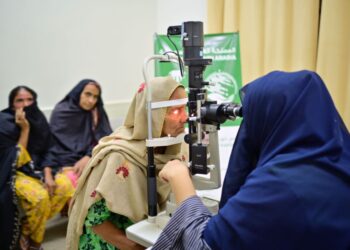Introduction: Alarming Link Between Nanoplastics and Stroke
In a groundbreaking study unveiled at a recent American Heart Association (AHA) scientific conference, researchers revealed a disturbing correlation: patients who have experienced a stroke, a transient ischemic attack (TIA), or temporary vision loss due to vascular issues have significantly higher levels of nanoplastic particles in their bloodstream compared to healthy individuals. The study shines a spotlight on an emerging area of concern in medical science — the potential health hazards posed by invisible plastic pollutants infiltrating the human body.
What Are Nanoplastics?
Nanoplastics are a form of plastic pollution that are even smaller than microplastics. While microplastics are generally defined as plastic fragments less than 5 millimeters in size, nanoplastics measure under 1 micrometer, or 1,000 nanometers. These minuscule particles are often invisible to the naked eye and can cross biological barriers, making them capable of entering the bloodstream, organs, and even cells.
Common Sources of Nanoplastics
Nanoplastics typically originate from the degradation of larger plastic items, including:
- Plastic water bottles
- Food packaging
- Cosmetic products with plastic exfoliants
- Synthetic clothing fibers
- Plastic containers and utensils
- Industrial pollution and household dust
Over time, environmental exposure, wear, and UV radiation break down these materials into microscopic pieces, which then make their way into the air we breathe, the water we drink, and the food we eat.
The Study: Connecting Nanoplastics to Vascular Disease
The study, presented at the AHA conference, analyzed blood samples from individuals with a history of stroke or stroke-related conditions and compared them to samples from healthy participants. The key finding was startling: those who had suffered from stroke-related events exhibited markedly higher concentrations of nanoplastic particles in their bloodstreams.
Researchers also noted a direct correlation between vascular diseases — conditions that affect the blood vessels — and the presence of nanoplastics. This suggests that the microscopic plastic particles might not only be a consequence of environmental exposure but also a potential contributor to the development or exacerbation of cardiovascular and cerebrovascular conditions.
How Nanoplastics Enter and Affect the Human Body
Nanoplastics are particularly dangerous due to their ability to bypass the body’s natural defenses. Unlike larger particles, nanoplastics can penetrate the intestinal wall, cross the blood-brain barrier, and even reach the placenta, potentially affecting unborn children. Once in the bloodstream, these particles may accumulate in critical organs such as the:
- Lungs
- Heart
- Liver
- Kidneys
- Brain
Their tiny size allows them to interact with cells at a molecular level, where they may:
- Trigger inflammation
- Cause oxidative stress
- Disrupt cell signaling
- Promote plaque formation in arteries
These effects can exacerbate or contribute to conditions such as atherosclerosis (hardening of the arteries), which is a major risk factor for stroke and heart attack.
Stroke and Its Warning Signs
A stroke occurs when the blood supply to a part of the brain is cut off, usually due to a clot (ischemic stroke) or a ruptured blood vessel (hemorrhagic stroke). When brain cells are deprived of oxygen, they begin to die within minutes, making it a medical emergency.
Common Symptoms of Stroke:
- Sudden numbness or weakness in the face, arm, or leg (especially on one side of the body)
- Confusion or trouble speaking
- Sudden vision problems in one or both eyes
- Difficulty walking, dizziness, or loss of balance
- Severe headache with no known cause
A transient ischemic attack (TIA), often called a mini-stroke, presents similar symptoms but usually resolves within minutes or hours. However, it is a serious warning sign of a future full-blown stroke.
Expert Reactions and Public Health Concerns
Experts have expressed concern over the implications of the study’s findings. Dr. Maria Rivera, a cardiovascular specialist unaffiliated with the study, commented, “We’ve long understood the dangers of air pollution and heavy metals, but the infiltration of nanoplastics into our cardiovascular system adds a troubling new layer of environmental exposure.”
There is growing concern among public health authorities about how long-term exposure to nanoplastics could silently contribute to chronic diseases. The fact that these particles can potentially trigger inflammatory responses and endothelial dysfunction — a precursor to heart disease and stroke — makes them a public health priority for future research and regulation.
The Growing Problem of Plastic Pollution
Plastic pollution has become a global environmental crisis. According to the United Nations Environment Programme (UNEP), the world produces over 400 million tons of plastic annually, with a significant portion ending up in oceans, landfills, and eventually, the food chain.
Even with recycling efforts, plastic degradation leads to micro- and nanoplastics entering the ecosystem. Studies have found plastic particles in:
- Tap water
- Seafood
- Table salt
- Bottled beverages
- Fresh produce
A 2021 study published in Environmental Science & Technology estimated that the average person may ingest up to 5 grams of plastic per week — equivalent to the weight of a credit card.
Implications for Future Research
The AHA study marks one of the first large-scale investigations linking nanoplastic exposure directly to vascular health risks, including stroke. However, experts caution that further research is essential to determine the causal mechanisms involved.
Key questions researchers are hoping to answer include:
- How do nanoplastics interact with the vascular endothelium?
- Do these particles contribute to clot formation?
- What is the long-term risk of chronic exposure?
- Are certain populations more vulnerable, such as children, pregnant women, or the elderly?
Preventive Measures and Policy Considerations
In light of these findings, public health authorities may need to take several steps to address the growing threat of nanoplastics:
- Stricter regulation of plastic production and use
- Improved labeling and warnings on plastic-containing products
- Investment in biodegradable alternatives
- Encouraging consumer awareness and behavioral change
Individuals can also reduce their personal exposure by:
- Using glass or stainless-steel water bottles
- Avoiding heating food in plastic containers
- Reducing consumption of bottled water and packaged foods
- Washing synthetic clothing in bags that filter out microfibers
Conclusion: A Call for Action
The discovery of elevated nanoplastic levels in stroke patients underscores a new dimension of environmental risk that could have profound health consequences. As science continues to uncover the hidden dangers of plastic pollution, it becomes increasingly clear that what was once considered an environmental issue is now also a serious medical and public health concern.
With the potential link between nanoplastics and vascular diseases such as stroke, the need for urgent research, policy reform, and public awareness has never been more critical. Combating plastic pollution is no longer just about saving the planet — it’s about protecting human health.

























